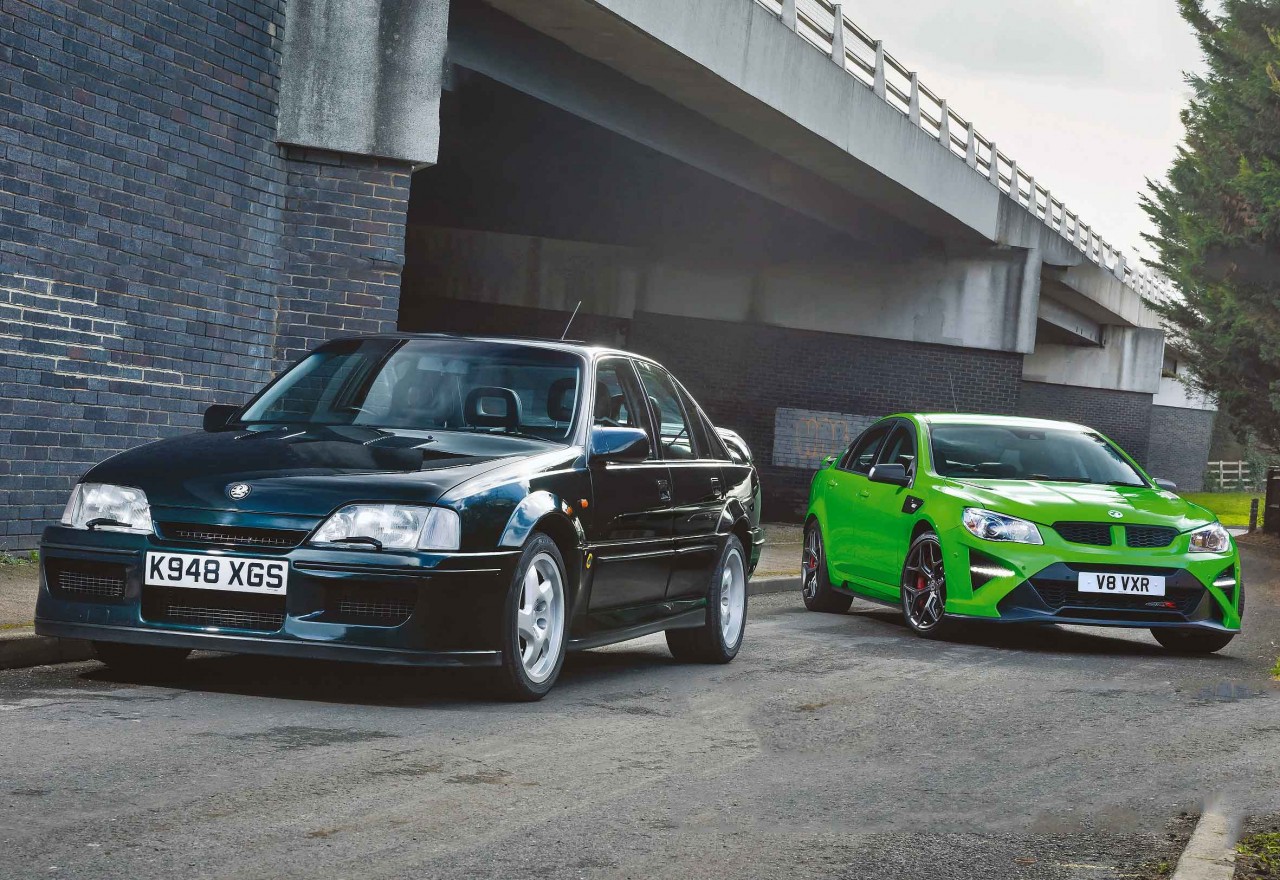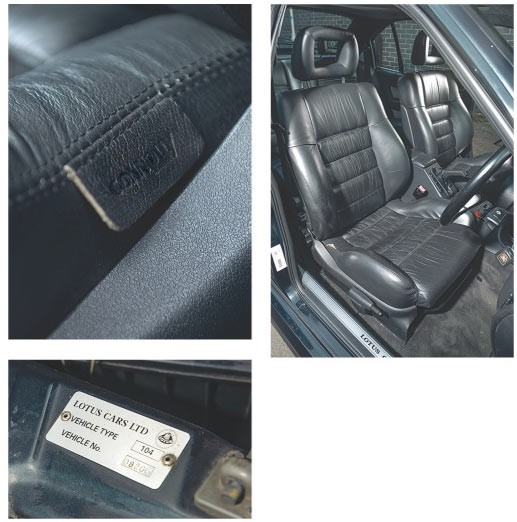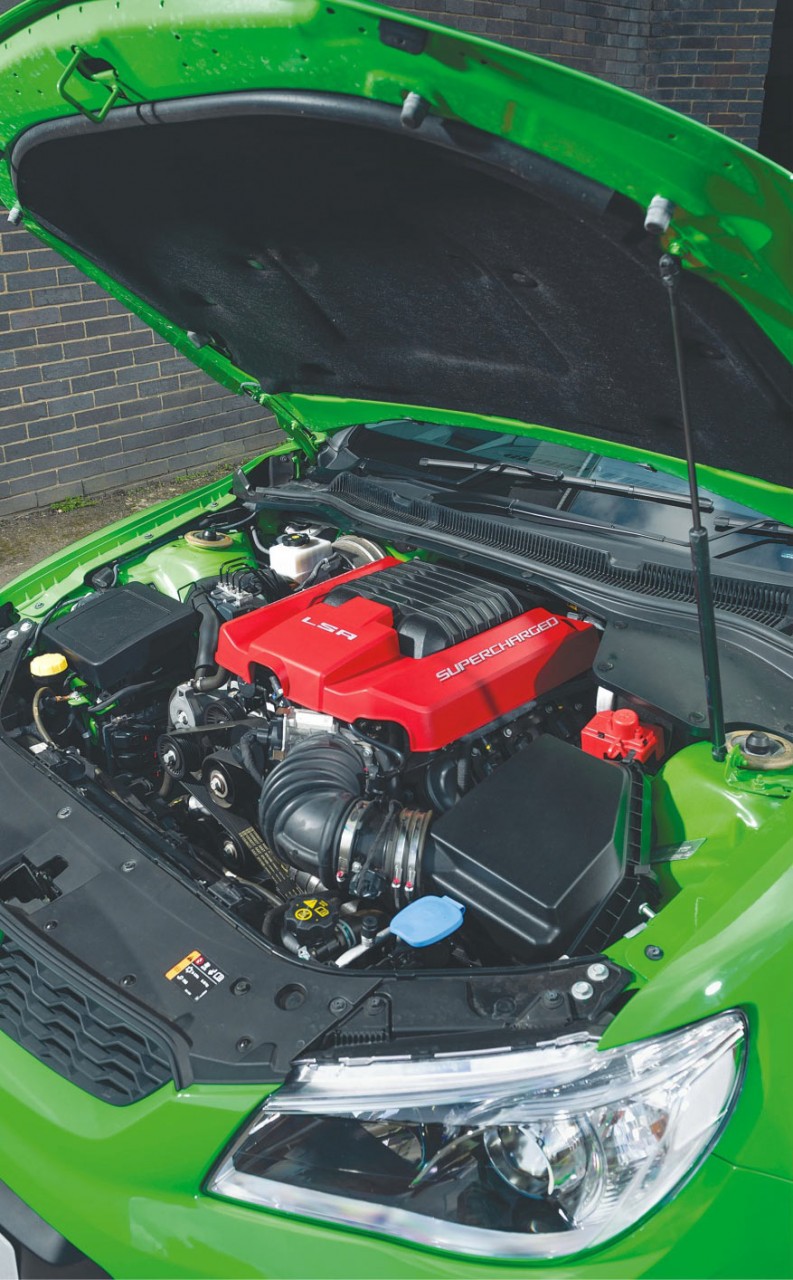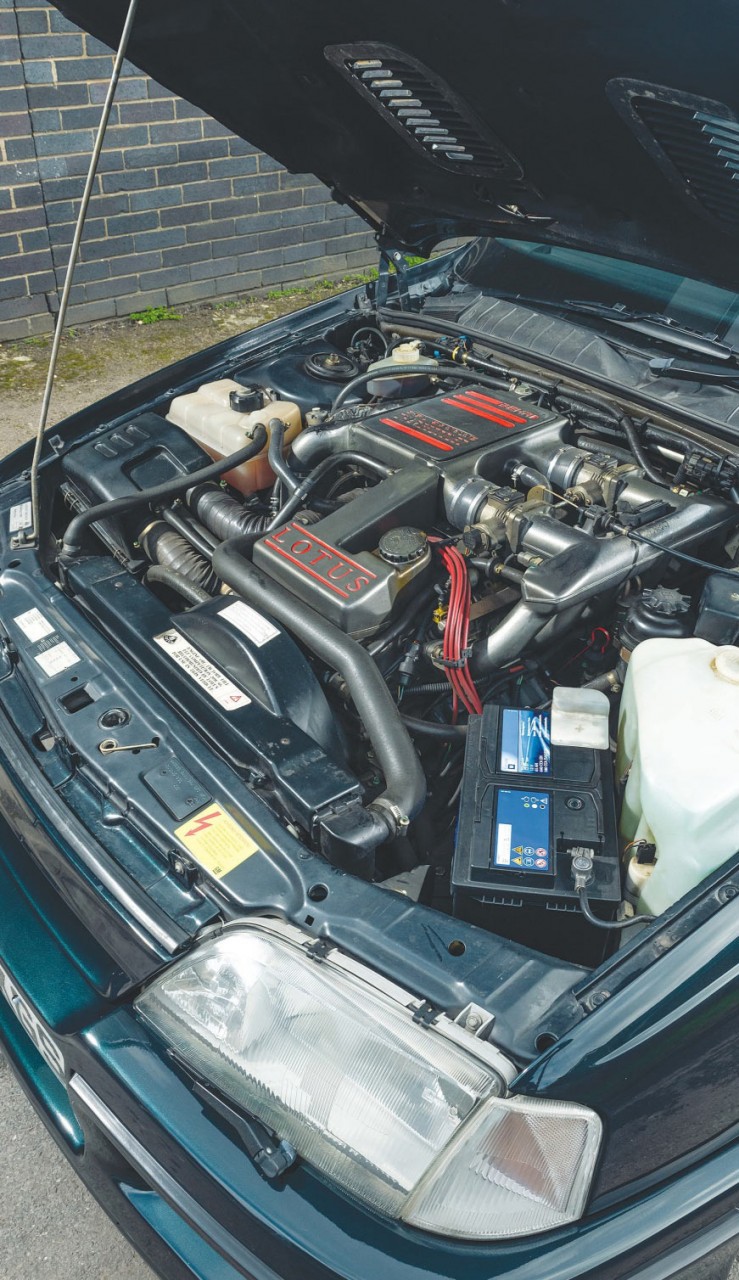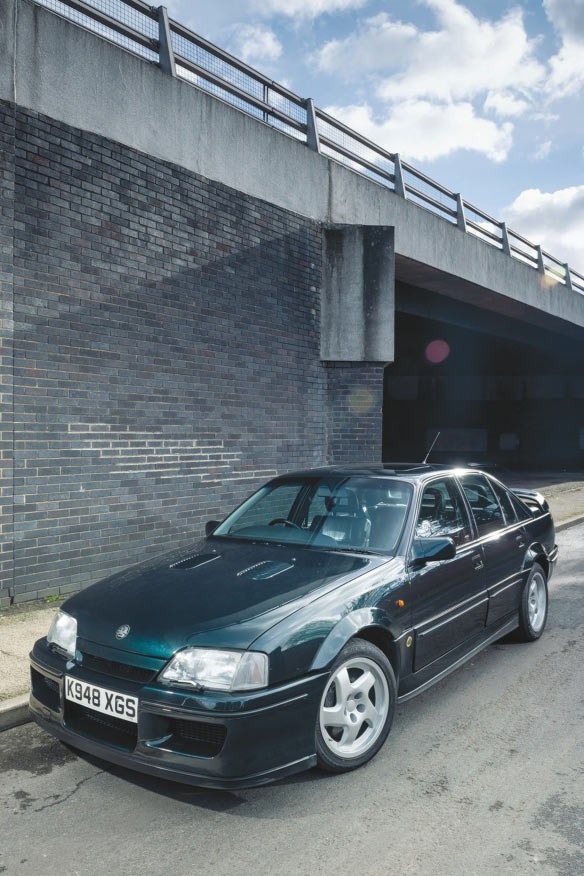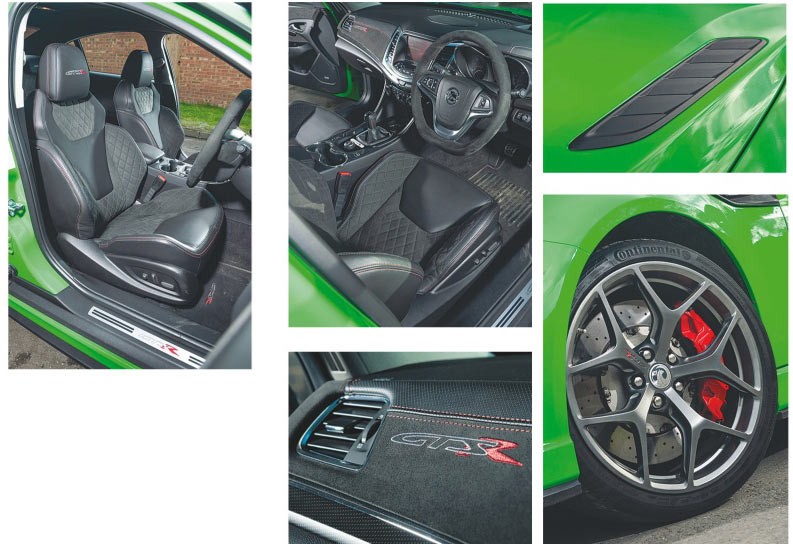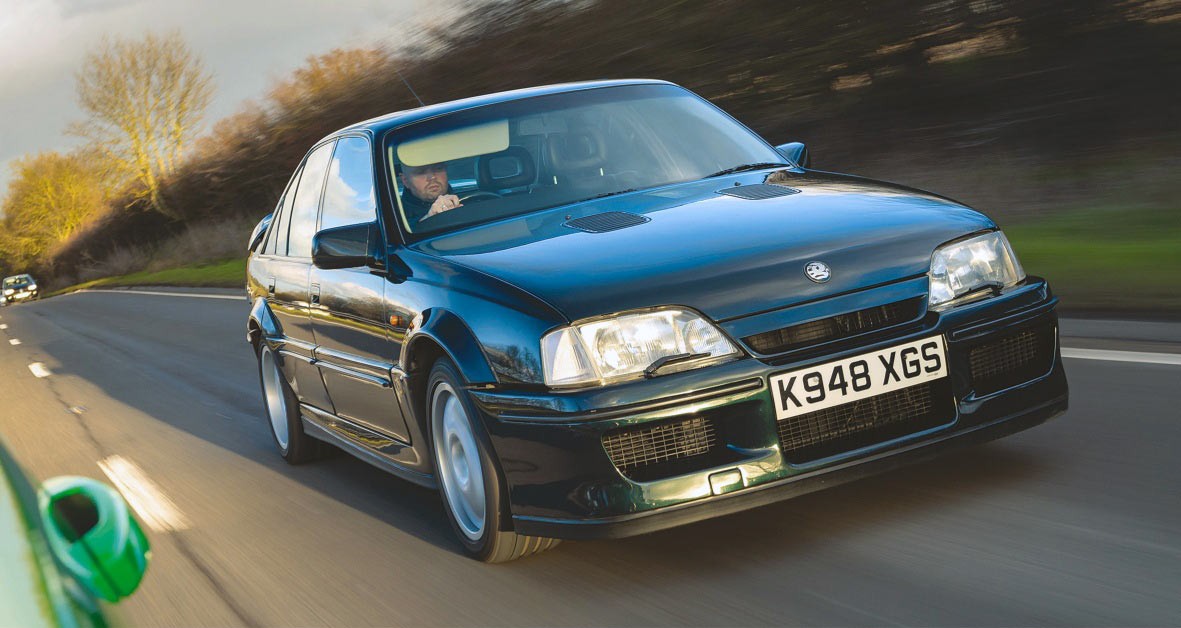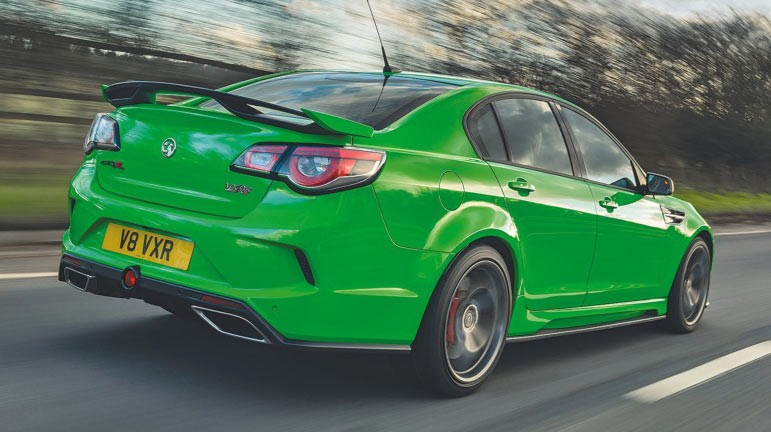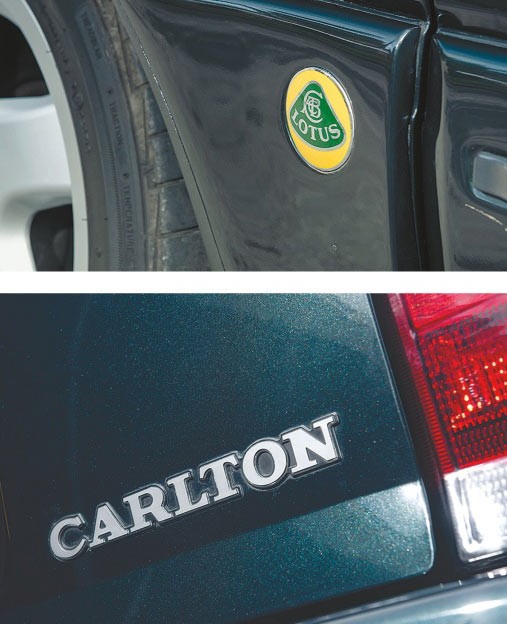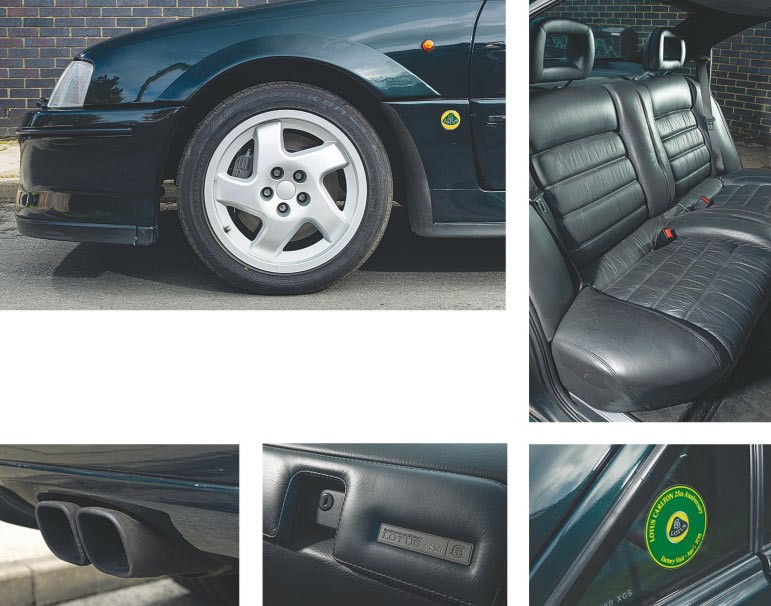VAUXHALL ICONS THEN & NOW
Old-school cool met new-school rules when we pitched the mighty Lotus Carlton and snarling VXR8 GTS-R against one another.
In case you’ve made it this far into the magazine and haven’t yet spotted this is our two-hundredth issue, perhaps the presentation of the most aspirational, inspirational and, frankly, mind-bending performance motors marketed by our favourite manufacturer will make you sit up and take notice. They’re the duo of Griffins almost always referenced by feature car owners when asked to name their dream drives, and each of these staggeringly powerful machines is responsible for encouraging successive generations of Vauxhall fans to stick with the brand. Best of all, we’re not talking about Targa-topped two-seaters or hardcore hot hatches. No, these Luton-labelled louts are fire-breathing four-doors.
“THE MOST POWERFUL PRODUCTION CAR EVER RELEASED WITH A VAUXHALL BADGE”
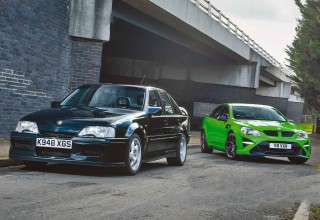
Vauxhall’s immense success at filling the UK’s roads with entry-level compact hatchbacks – considered by many to be little more than glorified shopping trolleys – masks the company’s long and fruitful history of performance motoring firsts. There was the C10 ‘Prince Henry’ of 1910, widely acknowledged as Britain’s first true sports car. Vauxhall guaranteed the result of its attempt at building the world’s best all-round tourer could achieve a top speed of more than 90mph, which amazed the embryonic motoring press almost as much as 1923’s 30-98 OE-Type Velox and its ability to fly past the 100mph mark. Officially the fastest catalogued production car in the UK at its time of release into the wild, six-hundred examples of the 30-98 were sold. It says much for the model’s legacy that 170 survive to the present day, although trust us when we tell you that a centre throttle, massively heavy flywheel and virtually nonexistent braking power make the 30-98 a challenging, if somewhat thrilling, drive on modern roads! Many more notable achievements for Vauxhall followed, not only in terms of its production capabilities – the 1937 H-Type, for example, was Britain’s first monocoque car – but also building upon the solid motorsport foundations laid by the C10. There was the iconic Dealer Team Vauxhall Firenzas (affectionately known as Old Nail and Baby Bertha) of the 1970s, V8-powered silver machines which went on to be recognised as the most successful British sports cars of all time thanks to their ability to win almost every race they competed in during staggeringly long careers. The TS6000, another V8-propelled monster, made its mark in the mid- 1980s, with success so strong, the championship-conquering, Kevlar-panelled Carlton remains the most recognisable Thundersaloon campaigned. And then there were the BTCC-dominating Vauxhalls arriving at the turn of the decade, from John Cleland’s series-winning Mk2 Astra GTE, through a half-decade of grid-inhabiting Cavaliers, culminating in the same Scot winning top honours with the model in 1995 before a switch to the Vectra B and a golden era of VXRacing success with Astra Coupes and Vectra Cs, making Vauxhall the most successful manufacturer to compete in the modern BTCC.
NEW BREED
There are, of course, many other race and rally triumphs for the company’s fans to shout about, many of them characterised by limited-run sports models, but the most enduring translation of circuit success to the road arrived in the form of the VXR brand in 2004. Promoted on a massive stand at the year’s Sunday Times Motor Show, a low-slung roadster badged as VXR220, a turbocharged fifth-gen Astra and a slinky, V8-powered coupe quite unlike anything the Vauxhall world had previously seen announced the firm’s intention to hit the performance car sector hard. Really hard.
“RIDICULOUSLY RAPID PACE AND THE ABILITY TO SPREAD SMILES FROM EAR TO EAR”

The Monaro instantly drew parallels with previous decade’s awe-inspiring Lotus Carlton, not because the two flagship performance modes shared looks, but because both were BMW baiters. The Lotus name also came up in conversation when discussing the Monaro’s stablemates at the NEC-hosted show; the VXR220 was a clear rival to the Elise, while unlike its Opel OPC-badged cousin in mainland Europe, the two-litre, turbocharged Astra H VXR featured suspension engineered by the Hethel-headquartered sports car maker in an effort to help the three-door’s chassis cope with the dire quality of British roads.
An import from the special vehicles division of GM’s Australian manufacturing arm, Holden, the 5.7-litre Monaro was a big hit, but lasted only four years in dealer showrooms before the Lotus Carlton’s true successor arrived in the form of the 411bhp VXR8 E1, a Holden Special Vehicles (HSV) Clubsport with a Griffin badge stuck to its nose. The batshit crazy VXR8 Bathurst S, complete with 522bhp and Walkinshaw Performance supercharger, arrived a short while later, gaining so much respect even the Vauxhall-hating presenters of Top Gear sung the Aussie muscle machine’s praises!
BIG HITTER
Various facelifts, special editions and a growing community of UK-based HSV devotees followed before the Gen F VXR8 GTS was introduced in 2013. Every successive VXR8 variant was pitched as more bonkers – not to mention more expensive – than the last, but the best was yet to come; following GM’s announcement to call time on Australian car production by halting the manufacturing of vehicles at Holden, a last hurrah for the VXR8 landed on UK shores in the form of the 2017 GTS-R, a £75k, 587bhp supercharged saloon limited to just fifteen units. All were sold the second order books opened. Back in Oz, the Commodore name is now applied to imported Insignias, meaning the GTS-R really is the last of its kind. In readiness for our two-hundredth issue, we thought it would be fun to bring together the 6.2-litre LSA V8-equipped stonker with its distant relative, the 377bhp twin-turbocharged Lotus Carlton. Almost thirty years separates these titans of the Vauxhall scene, but common DNA running through the cars is clear to see. Brash styling, race-spec stoppers, lavish interiors, fabulous forced induction, ridiculously rapid pace and the ability to spread smiles from ear to ear are immediately apparent, although don’t be fooled into thinking the driving experience is the same behind the wheel of each car. Put simply, the VXR8 GTS-R is an easy ride. It’s a big ol’ barge, but super-light steering, an equally light clutch, a linear power band, headsup display, a variety of configurable driver modes, sharp suspension and brakes capable of bringing the Titanic to an immediate halt mean you’re able to send close to 600bhp through the rear wheels without fear of losing talent. The interior makes you feel safe too, where creature comforts, easy-to-read digital gauges and figure-hugging sports seats take the place of the Monaro’s dated-when-released green screen and crude switchgear. Then again, the VXR8’s predecessor was all about the Chevrolet-sourced V8 up front. If you worried about how difficult you found tuning in to The Archers while on the move, you were probably missing the point.
The GTS-R is a totally different proposition. It’s the most powerful production car ever released with a Vauxhall badge, but it can also be used as a family runaround. Across all generations of VXR8, many of you have done exactly that. Four doors, a big cabin, generous luggage space and an ability to munch mega miles mean all you need to worry about is establishing your own oil refinery and trying not to wake the neighbours when setting off each morning. The introduction of switchable exhausts sorted the latter, but there were no such toys to play with in Lotusland.
Yes, the controversial Carlton delivers what many still consider to be blindingly fast pace, but it’s down to the driver to manage every aspect of the wide-wheeled wonder, including those 377 galloping ponies as they race towards a top speed closing in on 180mph.
LUTON LEGEND
That’s an extraordinary pace today, let alone at the start of the 1990s. Indeed, so outrageous was the Lotus Carlton, MPs debated whether the car – given Lotus designation, Type 104 – should be banned. After all, a gentlemen’s agreement between major European manufacturers resulted in an electronically limited top speed of 155mph for most performance vehicles. The Imperial Green giant stunned by exceeding the speed of the day’s top sports cars whilst retaining the ability to carry a family of four. A legend was born, but how times change.
Nearly seventy years before the Lotus Carlton was launched, Vauxhall was being lauded for bringing the 100mph 30/98 to market, but here was the manufacturer’s Chairman and Managing Director, Paul Tosch, thrown on the defensive with the mainstream press for what the nanny state deemed an utterly irresponsible take on a passenger car. Bob Murray, then editor of Autocar, the same magazine which praised the 30/98 decades earlier, complained that “nobody buying this car could possibly argue he needs or will be able to use a top whack claimed to be around 180mph.”
Such concern served only to fuel the public’s interest in Vauxhall’s technological tour de force. The Lotus Carlton makes use of a C36GET inline-six, a 3.6-litre development of the three-litre six-shooter found beneath the bonnet of the Carlton GSi3000. Twin Garrett T25 turbos, three-coil wasted spark ignition, heavy block webbing, forged internals (pistons made to an original Lotus design) and a Corvette ZR-1 ZF six-speed gearbox with a – wait for it – Holden Commodore V8 limited-slip differential form the lion’s share of the performance parts, although AP Racing four-pots, model-specific Ronal seventeens and a MacPherson front strut and rear multi-link setup designed by Lotus also feature, the latter lowering and stiffening the ride while increasing wheel travel. Not that you’d describe a Lotus Carlton’s handling as being poised in the present…
TOUGH LOVE
It’s wallowy, similar to how you’d describe the feel of pulling a Cavalier or Calibra Turbo around corners at speed. The clutch is super-heavy, encouraging those unfamiliar with the rudimentary nature of many older sports cars to embarrass themselves when pulling away from rest. The seats, while comfortable thanks to lashings of Connolly leather, aren’t particularly supportive and the dash layout doesn’t differ hugely from the GSi3000, save for bucketloads of Lotus branding. There’s a speedo which goes up to 180, though, and what happens if you push this pedal to the floor? ¡Ay, caramba!
This is it. Forget the GTS-R’s effortless attack of the asphalt. The Lotus Carlton forces you to drive. You’ve got to take control of the clutch and gearbox, you’ve got to plan ahead when braking, you’ve got to push into the corners. You’re going to need to look after the car, but unlike the GTS-R, the Carlton isn’t necessarily going to love you back. The only heads-up display here will be a cyclist splattered across the windshield, indicating, perhaps, you might want to take things a little easier.
Another notable difference in the characteristics of these two giants of the Vauxhall world is the Carlton’s ability to cruise far more comfortably than the GTS-R. The older four-door seems totally at ease at moderate speed, giving away its origins as a lazy executive saloon. Of course, the VXR8 has no problem gliding, but the Australian brute’s instant throttle response and quick reaction to driver input suggests it’s constantly gagging to be pushed hard, which, in truth, is what it’s built for. As if the colour of the example we’re driving isn’t enough of a giveaway…
When choosing between the Lotus Carlton and VXR8 GTS-R, you’ll undoubtedly have a favourite. Perhaps nostalgia plays a part in how you’ve reached your decision? Perhaps you’re less enthused by retro rides and more interested in the performance of modern automotive technology? Whichever way you swing, there’s no denying these Goliaths of the Griffin scene have brought a major boost to Vauxhall’s reputation for peddling performance metal, the likes of which we may never see again.
Twin-turbo C36GET was developed after Lotus failed to fit the Corvette’s ZR-1 V8 into the Carlton’s engine bay. A Grundig cassette player linked to a multi-CD changer loaded with the Yazz back catalogue.
AP four-pots were a big deal at the time of LC production. Soft, sumptuous Connolly hide in plentiful supply. The GTS-R’s firepower is delivered by a supercharged 6.2-litre LSA V8. A million driver modes compared to the LC’s, er, one. The car in front is a…

